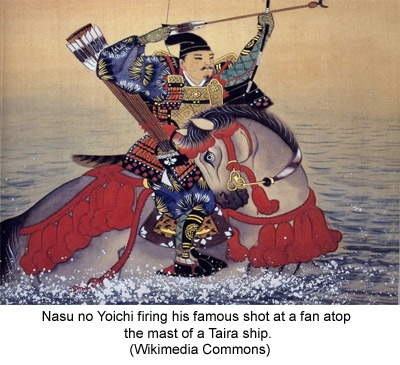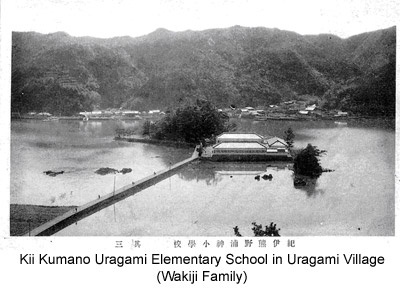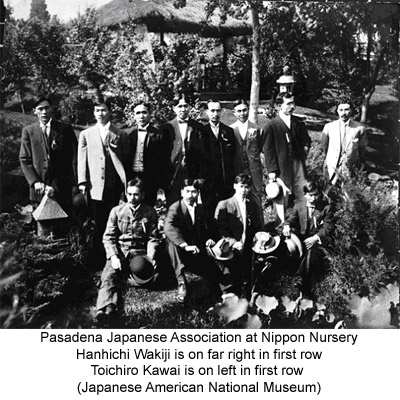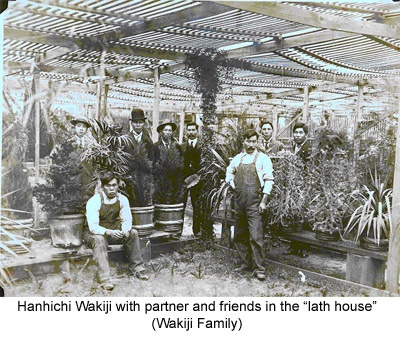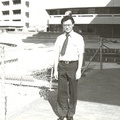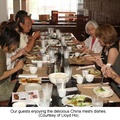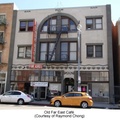Forward
Ancestors of the Wakijis
by Noboru Wakiji
In 1185 the Heike Clan (AKA Taira Clan) was defeated by the Genji Clan (AKA Minamoto Clan) during the great Genpei War in late Heian period. Our ancestor (unknown name), a samurai, fled from Yashima, on the coast of Seto Inland Sea on Shikoku Island to the southern part.
Our ancestor, together with fellow samurai of the Heike Clan settled in a coastal village named “Wakiji.” Since they gave up the warrior’s class, they became yeomen who lived as farmers as well as fishermen to keep their lives.
It is difficult to know when our ancestors came to Uragami, but it is supposed that they came to Uragami in 1400 or so. At that time Uragami was called Urajo. Our ancestors were called Urajo as their family names.
Later, Kariya and Nishi Kariya came from the Urajos. The Kariyas and the Nishi Kariyas worked as Shinto priests. They enshrined “Benzaiten,” their Heike goddess, in a small island in Uragami Bay.
Our ancestors were Nishi Kariya. They changed their family name to Wakiji (or Wakichi) in the Meiji era.
Our graveyard has a monument of unknown ancestors. In Uragami, such monuments are rarely found. It shows that our family is a very old one.
In the home of Katsuro Wakiji, there are fifteen memorial tablets of dead forefathers. He is the first ancestor to be known, and many ancestors before were enshrined as a monument because the temple (kaizo-ji) was burnt down to ashes. The book of list of names of the whole village was lost.
Hanhichi Wakiji was born on February 13, 1876 in Uragami Village (Uragami-Mura) in Nachi-Katsuura Town (Nachi-Katsuura-Ch?). The Town is located in Higashimuro District (Higashimuro-Gun) of Wakayama Prefecture (Wakayama-Ken) on the island of Honshu in Japan (Nihon). It was a fishing port (minato) on the southern tip of Kii Peninsula on the coast. It faces the Kumano-Nada Sea in the Pacific Ocean. Uragami Village is the Kumano region on the southern part of the Kii Peninsula. Almost of all Kumano is mountainous with cedar forest, shaped by steep peaks and gorges with valleys.
Hanhichi’s father and mother were Chogoro and Mura Wakiji. Chogoro fished in the sea. The siblings of Hanhichi included two brothers, Saiichi and Sojiro, and three sisters, Han, Sano, and Kana. Kana was considered the most beautiful girl in Uragami in her day. Unfortunately, a spurned suitor killed Kana at the age of 17. Hanhichi attended Kii Kumano Urgami Elementary School on the island. Hanhichi’s grandfather, “Hanhichi” was a very clever man. He was famous for his mental arithmetic of three figures.
At the age of 19 years old, Hanhichi arrived in America in 1895 at the Port of San Francisco. He had departed from the Port of Kobe aboard a steamship (either aboard S.S. China, 5,060 tons steamer, or S.S. City of Peking, 5,080 tons steamer) of the Pacific Mail Steamship Company that sailed to Yokohama and to Honolulu. As part of the Japanese diaspora, Hanhichi was one of thousands of Japanese immigrants (Nikkei), to seek their fortune in the land of opportunity for a better life. He worked as a houseboy in San Francisco. Later, he worked on the farm and for a railroad company in Northern California.
Hanhichi was the second Issei (first generation) pioneer to settle in Pasadena, The City of Roses, on the west end of the San Gabriel Valley at the foot of the San Gabriel Mountains. Toichiro Kawai, who had immigrated in 1902, was the first Issei pioneer. He worked as a carpenter. At the turn of the century, Pasadena was a growing resort town of grand hotels. The town of magnificent mansions was surrounded by orange and lemon orchards, farms, and ranches. Pasadena was the winter resort for wealthy Easterners. Atchison, Topeka, and Santa Fe Railway (ATSF) had its Pasadena depot.
Hanhichi learned the nursery trade with Edward H. Rust of the Rust Nursery Company of South Pasadena. He was the son of Horatio Nelson Rust, the founder of the Palm Place Nursery in South Pasadena. Rust was the supplier of plants and trees for the gardens of mansions of Millionaires’ Row on Orange Grove Avenue on the West Side and other fine estates in Southern California.
In early 1905, Hanhichi with two partners, Mr. Ichijo Tani and Mr. J. Hori, fellow Issei, founded the Nippon Nursery Company (niwa-zukuri). It was located on 1501 East Orange Grove Avenue on the East Side of town near the North Loop Line of Pacific Electric. They bought the land from Sallie Copeland for $10 on January 27, 1905 with a capital of $900. Hanhichi’s share was $500. Nippon Nursery was in the wholesale and retail business, specializing in palms, roses, ferns, evergreens, ornamental trees. It was the first Japanese nursery in Pasadena. During the same year, Adolphus Busch, founder of Anheuser-Busch brewing company, also opened Busch Gardens in Pasadena. Later, Tani and Hori returned permanently to Japan. Hanhichi brought their shares and became sole proprietor.
On the grounds of the one-acre land, he was always constantly busy with daily chores. In the early morning, he watered the plants in sections. Later, he planted and transplanted plants in bakery cans. He cultivated plants in a glass greenhouse and lath house. During business hours, he made sales and deliveries. He made deliveries on a Ford Model T truck with a flatbed. Taeno helped in Nippon Nursery. As gardener (gadena) with his tools (dougu), he performed gardening jobs in the neighborhoods of Pasadena and Altadena. Business was decent enough to put food on the dining table and to get clothes during the Great Depression.
Hanhichi married Miss Taeno Hamaguchi, also from Wakayama Prefecture. She was a “Picture Bride” who married Hanhichi by proxy. She was born and raised on a farm in Shigeasato Village (Shigeasato–Mura). She was a farm laborer helping her parents, Takezo and Tsaru Hamaguchi. With Sojiro Wakiji, brother of Hanhichi, at age of 22 years old, she departed from the Port of Kobe aboard a steamship (fune), S.S. Manchuria of the Pacific Mail Steamship Company. The S.S. Manchuria was a commercial passenger steamer of 13,638 tons. They arrived at the Port of San Francisco on May 5, 1911. She was briefly held for processing at the Immigration Station on Angel Island.
Hanhichi was always busy running Nippon Nursery, six days per week. The majority of his customers were Caucasian (Hakujin) middle-class families. He coordinated garden projects with landscape architects, including Lucille Council. She was a partner of Frances Yoch, a very well known landscape architecture business in Southern California. One important customer was Charles Chaplin, the famous English comedy actor. On an all-day trip, Hanhichi delivered plants to his California Gothic home in Hollywood by horse and buggy.
* This article was written by Raymond Chong with George Wakiji. Watch a video interview with George from the Nikkei Album. The interview was conducted as part of the Opening Day activities for the exhibition Landscaping America: Beyond the Japanese Garden.
© 2008 Raymond Chong


